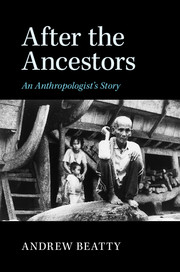Book contents
- Frontmatter
- Epigraph
- Contents
- List of illustrations
- Preface
- People
- Map
- Prologue
- 1 The statue
- 2 House key
- 3 Among women
- 4 Blood brothers
- 5 Daggers and debutants
- 6 Stormy Sunday
- 7 Three things that matter
- 8 The making of great men
- 9 A game of chess
- 10 Cholera song
- 11 Progress
- 12 Brothers and strangers
- 13 Exile and return
- 14 Field work
- 15 The chicken's neck
- 16 Good deaths and bad deaths
- 17 First family
- 18 Blessing
- 19 Half an egg
- 20 Waiting
- 21 Death of a chief
- 22 Ama Jonah at bay
- 23 Unravelling
- 24 The ethnographer and his double
- Epilogue
- Index
Preface
Published online by Cambridge University Press: 05 March 2015
- Frontmatter
- Epigraph
- Contents
- List of illustrations
- Preface
- People
- Map
- Prologue
- 1 The statue
- 2 House key
- 3 Among women
- 4 Blood brothers
- 5 Daggers and debutants
- 6 Stormy Sunday
- 7 Three things that matter
- 8 The making of great men
- 9 A game of chess
- 10 Cholera song
- 11 Progress
- 12 Brothers and strangers
- 13 Exile and return
- 14 Field work
- 15 The chicken's neck
- 16 Good deaths and bad deaths
- 17 First family
- 18 Blessing
- 19 Half an egg
- 20 Waiting
- 21 Death of a chief
- 22 Ama Jonah at bay
- 23 Unravelling
- 24 The ethnographer and his double
- Epilogue
- Index
Summary
The passage from pagan to Christian, hill farmer to peasant, tribesman to citizen – the story of many tropical societies – has been exhaustively documented, but the people who make up that story have mostly been written out of it. This book, a narrative of interwoven lives, aims to capture the human dilemmas which attend the transformation of the tribal world under the pressure of colonization, modernization and conversion: a reorientation that comes after the ancestors.
The book is also about fieldwork. The sharing of life over a period of years with people of radically different temper, culture and circumstances is one of the great formative experiences – an intellectual and sentimental journey without obvious parallel and the source of anthropology's deepest insights. Whether the anthropologist's tale is worth the telling only the reader can judge, but to tell the bigger story without showing how those hard-won insights emerge – in what circumstances, among whom and for whom – is to lose half their meaning. A narrative approach has its own constraints, of course, but given the highly specific, personal and unrepeatable nature of fieldwork, the use of a narrator – a point of view and centre of consciousness – not only permits a gain in honesty and an entry for the reader; it opens up vistas closed to conventional academic presentation.
I came to this view many years after writing a different kind of book about the same village in Nias, an island on the western most fringe of Indonesia – next stop Africa. The focus in that early effort was ceremonial gift exchange: the calculus of giving and receiving, of just deserts, sin and damnation. A resonant theme, to be sure, but the analytical format of case histories and theoretical discussion had excluded the living drama, the characters, histories, emotions and most of what gave meaning to life in Nias. The ethos of rivalry and resentment – the agonistic world of overreachers – had eluded me.
- Type
- Chapter
- Information
- After the AncestorsAn Anthropologist's Story, pp. xi - xivPublisher: Cambridge University PressPrint publication year: 2015

